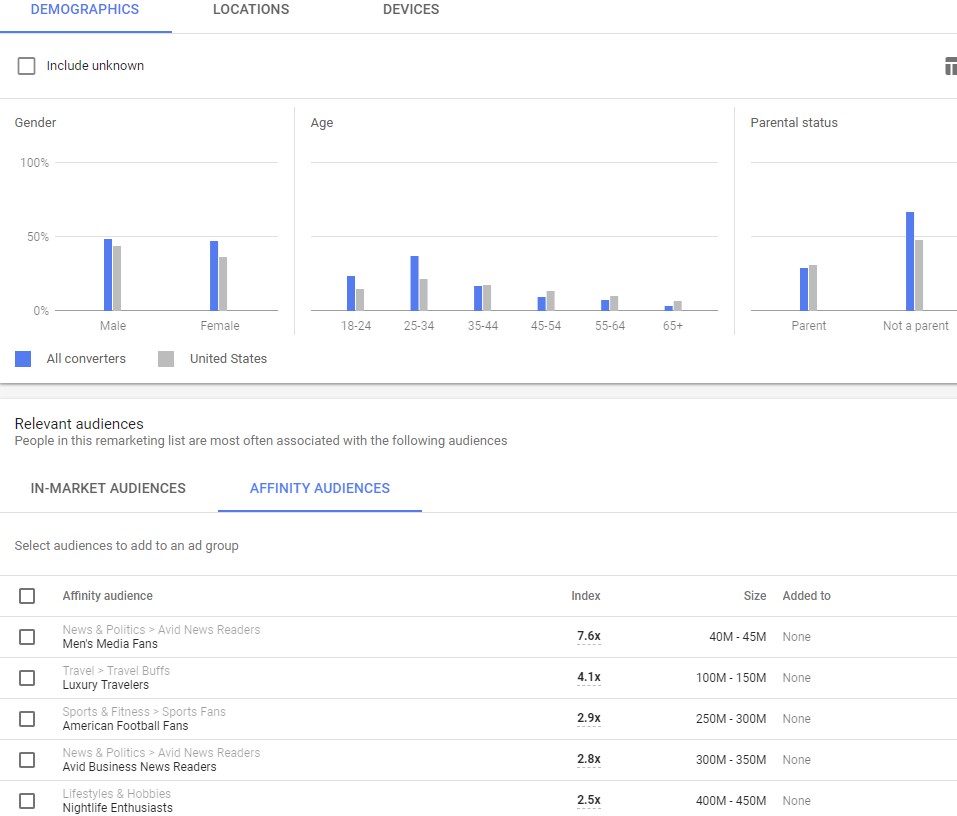When running paid campaigns on both search and social, it’s imperative to take all learnings from each channel and apply them to the other. This allows you to take an holistic view of your marketing efforts and optimize each channel with insights you wouldn’t get by keeping things in silos.
Search is all about capturing those who have intent related to what you’re selling. Extrapolating and recognizing the audiences expressing that intent should be your goal when it comes to gathering search engine marketing (SEM) learnings.
This article covers some of the easiest ways to gather learnings from SEM and leverage them in paid social.
Pull demographic data
As you run your search campaigns and collect significant data, you should pull in insights on gender, age, household income, and parental status. Google automatically segments out different brackets within these categories to provide insight into how each performs (e.g. how males behave versus females, or ages 18–29 behave versus ages 30–39).
As you gather this data, you can then determine which demographics are converting on your ads and which demographics are poor performers. This will be vital when you craft your audiences to target on social – where you can go after your top performing ages, genders and household incomes, while excluding poor performers. It allows you to be efficient with your budgets based on information you’ve already gathered.
Pull geo data
Similarly, you should take a look at geo data:
- Are there specific locations and areas that don’t perform for your business?
- Are there high performing geos?
Group together geos with similar performance, and leverage that in your social targeting.
For example, imagine you sell luxury home furniture. Using your search data, you have found that your audiences tend to be middle-aged females. Top performing geos are the coastal states; the Midwest performs ok; and the southern states have the worst performance. Segment out ad sets into two groups of geo-targets for your various audiences: one goes after the coastal states, and the other goes after the Midwest. Adjust your budget and bids according to expected performance, then optimize as the social data comes in.
There is, however, one caveat to this: don’t get so granular that audience sizes get too small (segmenting your audiences at the state level based on performance could significantly reduce audience sizes). However, what we have noticed with Facebook is that the smaller the audience, the higher the cost per click (CPC) tends to be. By grouping similarly performing geos together, you are able to retain control over performance yet reap the benefits of moderate CPCs.
Modify social ad copy with search insights
You should always be testing different messaging and copy themes on search. Once winners are validated, transfer those themes into your social ads. They may work as well, worse, or better, but you’ll have a good idea that the message will resonate.
Use Google’s audience insights tool to inform paid social
Take your top converting audiences within Google and run an analysis on the audience insights tool to get additional information about who they are, which can be extremely valuable across channels:
- What are their interests?
- What types of devices are they typically using?
- What are they in the market for?
You can then directly take that information and begin crafting audiences to test within social platforms such as Facebook, Pinterest and Instagram. As a result, your search campaigns will being doing double for your spend: they’re getting you direct responses and helping optimize your performance on other major platforms.
source https://searchenginewatch.com/2018/06/20/how-to-transfer-insights-from-search-to-social-campaigns/


No comments:
Post a Comment